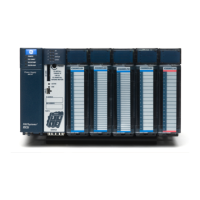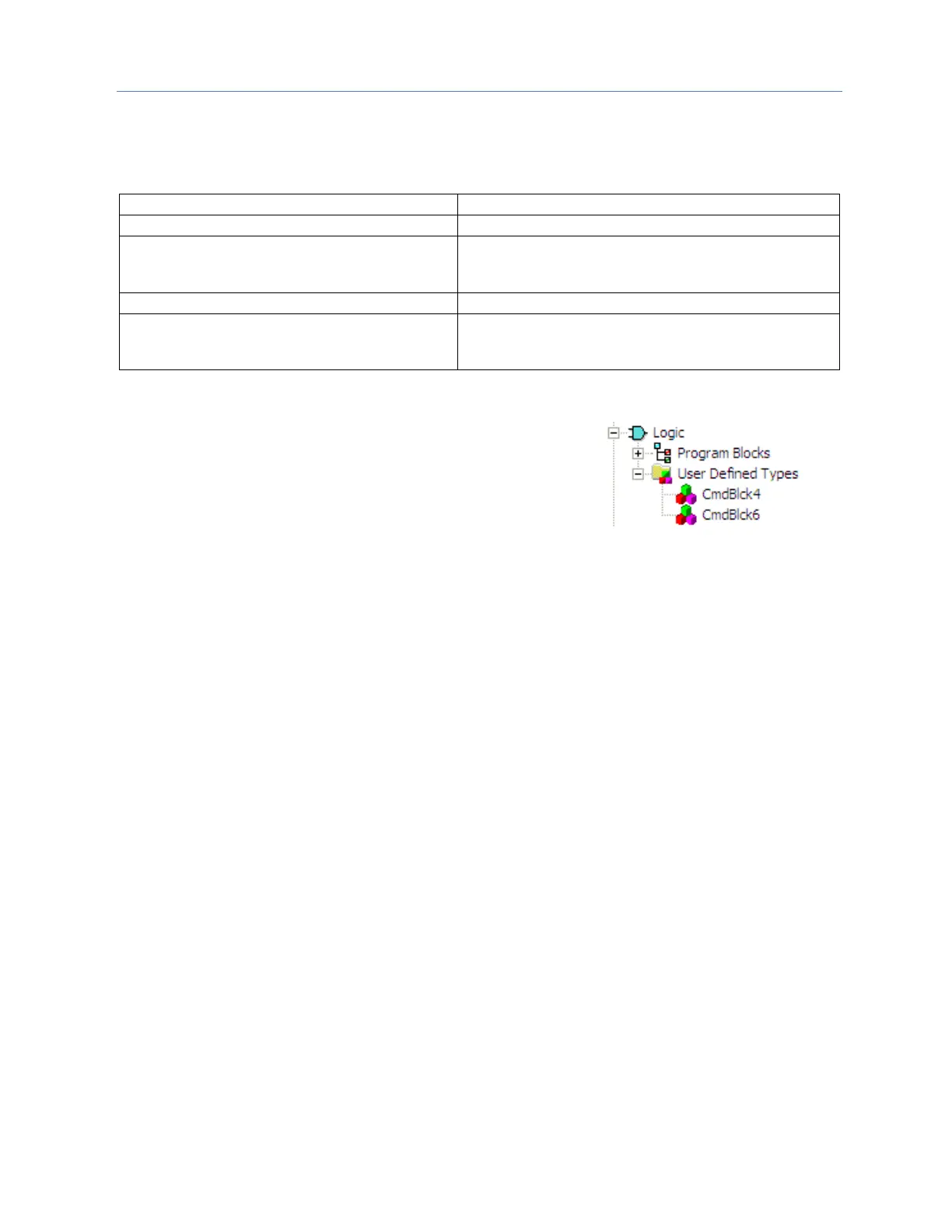Chapter 3. Program Data
GFK-2950C February 2018 55
3.10 User Defined Types (UDTs)
A UDT is a structured data type consisting of elements of other selected data types. Each top-level
UDT element can be one of the following:
Simple data type, except STRING
Another UDT, except any in which the current UDT
is nested at any level.
Note: A UDT cannot be nested within itself.
A UDT named UDT_ABC has a top-level element whose
data type is another UDT, named UDT_2.
Array of a simple data type
Array of UDTs
Note: A UDT cannot be nested within itself.
A UDT named UDT_ABC has a top-level element that is
an array whose data type is another UDT, named
UDT_row.
1. In Machine Edition, add a UDT as a node under a target in
the Project tab of the Navigator. A UDT will be saved with
the target in which it is used.
2. Edit the UDT properties and define the elements in the UDT’s
structure.
3. Create a variable whose data type is the UDT. By default,
the variable resides in symbolic memory. You can convert
the symbolic variable to an I/O variable by assigning it to an
I/O terminal.
4. Use the variable in logic.
3.10.2 UDT Properties
Name: The UDT’s name. Maximum length: 32 characters.
Description: The user-defined description of the UDT.
Memory Type: The type of symbolic or I/O variable memory in which a variable of this UDT resides.
Non-Discrete: (Default) Word-oriented memory organized in groups of 16 contiguous bits.
Discrete: Bit-oriented memory.
Notes: You cannot nest a UDT of one memory type in a UDT of a different memory type. Changing
the memory type propagates to existing variables of this UDT only after target validation.
Is Fixed Size: If set to True, you can increase the Size (Bytes) value to a maximum of 65,535 bytes to
create a buffer at the end of the UDT. The buffer is included in the memory allocated to every
downloaded variable of that UDT data type. Use of a buffer may allow RUN Mode store of a UDT
when the size of the UDT definition has changed. For details, refer to RUN Mode Store of UDTs.
If set to False (default), the Size (Bytes) value is read-only and does not include a buffer at the end of
the UDT.
Size (bytes): (Read-only when Is Fixed Size is set to False.) The total number of bytes required to
store a structure variable of the user-defined data type (UDT).
Bytes Remaining: (Read-only; displayed if Is Fixed Size is set to True.) The UDT's buffer size; the
number of bytes available before the actual size of the UDT reaches the value of the Size (bytes)
property.

